|
|
 |
William Dampier
1652 - 1715
English Pirate
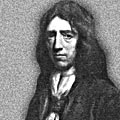 |
William Dampier came
from Somerset, England, and fought alongside buccaneers in Central America. Marooned on the Nicobar
Islands in the Indian Ocean, he escaped in a canoe and wrote about his travels in "Voyage
Around the World" in 1697. Dampier was a brilliant navigator and later explored the
waters around Australia. |
Simon Danziger or Dansker
AKA Dali Rais or Captain Devil
Dutch Privateer
Died 1611 |
Danziger
sailed out of Marseilles, France, in the 1600's, but took up service with the Barbary
corsairs. He captured many Christian ships and taught the Muslims seafaring skills required for
the North Atlantic waters. Danziger then changed sides again only to be seized and hanged in Tunis. |
Michael de Basco |
de Basco assisted Francois l'Olonaise as land captain in the attacks
and conquests of Maracaibo and Gibraltar. |
Howell Davis
Welsh Pirate
Active 1718 - 1719
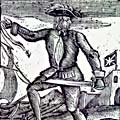 |
Davis was a likable swindler and pirate who was admired by his crew
for his courage. He often posed as a merchant or pirate hunter in order to size up his opponents.
He plundered islands in the Bahamas, and after attacking slaving ships off Africa's Guinea Coast, he
was eventually killed in an
ambush at the Portuguese colony of Principe. Following the incident, Davis's crew avenged his death, burning the fort and shelling
the town. |
La Marquise de Frèsne
Active late 1600's
Mediterranean Pirate |
|
Jacquotte Delahaye
Active 1650's-1660's
Caribbean Buccaneer |
|
Benito de Soto
Portuguese Pirate |
In 1827, de Soto sailed from Brazil to Africa aboard the Defense de Pedro on a mission to
seize a vessel and turn pirate. After picking up a consignment of slaves off the African coast,
de Soto led his co-conspirators in a bloody mutiny, throwing the ship's captain and crew overboard
to drown. De Soto then took the ship to the West Indies and sold the slaves.
De Soto renamed the sleek brigantine the "Black Joke" and terrorized the Caribbean and the South Atlantic.
He became so notorious for his brutal ways that ships sailing from South America refused to sail alone
and formed convoys around St. Helena in order to attempt safe passage.
In 1832, he overtook an British barque named the Morning Star, blasting the unarmed trade ship
full of holes. Murdering its captain, plundering the cargo, then brutalizing the women and
throwing them and all its other passengers into the hold, the Black Joke sailed away, sure that the
Morning Star would soon sink. The crew managed to escape by a miracle, repaired the ship and
left the scene. Meanwhile, De Soto continued to pillage his way back toward Spain
until his ship met with foul weather and was found floundering along the rocky coast near Cadiz, Spain.
Posing as honest sailors, the crew was rescued, but their true nature was soon discovered when
their booty was examined. De Soto managed to evade capture and escaped to Gibraltar, but arrived
in port at the same time that the plundered Morning Star pulled in. Recognized by a passenger
from that ship, he was tried, found guilty and shipped to Cadiz, Spain, to be hanged along with his crew.
Gallows were erected on one of the docks. As was the custom, the condemned man was brought to
gallows in a donkey-pulled cart, riding atop his own coffin. Upon arrival de Soto proved himself
to be as brave and defiant in death as he was in piracy. Rather than
allow somebody else to hang him, he stood on top of his coffin, calmly adjusted the noose around his neck
and smiled to the crowd as he exclaimed "Adios Todos!" (roughly, so long everybody)
then jumped from his cart to a slow painful death. |
Anne Dieu-le-veut |
|
Sir Francis Drake
Vice Admiral
English Privateer
c. 1540 - 1596
 |
Famous for his circumnavigation of the world in the sixteenth century, Sir Francis Drake was an English privateer, navigator, slave trader, politician and civil engineer of the Elizabethan era. He was second-in-command of the English fleet against the Spanish Armada in 1588. He died of dysentery after unsuccessfully attacking San Juan, Puerto Rico in 1596.
His exploits were semi-legendary and made him a hero to the English but to the Spaniards he was equated with the devil. He was known as "El Dragon" (an obvious play on his family name) for his actions. King Philip II actually offered a reward of 20,000 ducats (about $10 million by 2007 standards) for his life. Many a city in the 16th century was ransomed for less.
While his passing was mourned in England, there were celebrations in Spain and its dominions. |
Rene Duguay-Trouin
1673 - 1736 |
This Breton corsair from St. Malo became so famous for his attacks
on British shipping that he was made a French naval commander and was given many public honors. |
  |
Peter Easton
Active 1607 - 1612 |
Easton was an English
pirate who commanded 17 ships and carried out attacks from Newfoundland to Weat Africa. Having
won a fortune, he settled in the South of France and was made a Marquis. |
Edward England
British Pirate
Active 1718 - 1720
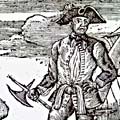 |
Captain England was an officer on a Jamaican sloop which was captured
by Christopher Winter, after which he joined the pirates.
An English privateer, Woodes Rogers, attacked the pirates stronghold in the Bahamas.
Captain England managed to escape and while sailing along the coast of Africa and the
Azores and Cape Verde islands, he took many prizes.
Captain England traded his sloop for a larger ship and renamed her the Pearl and returned
to Africa in the spring of 1719. He was very successful, plundering two dozen ships. One of
which the pirates kept, renaming her the Victory in which Captain John Taylor was made the captain.
In 1720, the Pearl and Victory sailed along the Malabar coast of India. It was during this
time that the Pearl was exchanged for a ship armed with 34 guns which was renamed the Fancy.
Captain England then sailed for Johanna Island near Madagascar and they encountered three large
English and Dutch ships which were trading with the East Indies. Two of the ships escaped but the
Cassandra captained by James Macrae stayed to engage Captain England's force. A fierce
battle lasted for several hours. Both the Cassandra and the Fancy were grounded,
but continued to fire upon one another relentlessly.
Leaving behind its cargo, Captain Macrae fled to the shore. The Cassandra and
Captain England's forces had suffered many casualties. After 10 days of hiding,
Captain Macrae went aboard the Victory hoping for mercy. Captain Taylor wanted to kill him, but
Captain England wanted to spare his life. Captain England was able to persuade Taylor
after several drinks of rum. Captain Macrae was given the badly damaged Fancy.
Captain Macrae sailed for Bombay and eventually became the governor of Madras in 1725.
He remained in charge until 1730 collecting much bribe money during his time in office.
Captain England's crew was much grieved by the decision to let Captain Macrae go and turned
against Captain England. Captain England was removed as captain and put ashore on Mauritius with
three others, eventually making his way to Saint Augustine's Bay where he would die a pauper having
lived off the charity of other pirates. |
Eustace
AKA the Black Monk
Active 1200's |
This Flemish born
monk turned outlaw and raided shipping in the English Channel. He was said to have a
pact with the Devil and the power to make his ship invisible. But he was defeated in a
sea battle in 1217 and had his head cut off. |
John Evans
Active 1720's |
Captain John Evans was a
Welsh sailor who ended up in Port Royal, Jamaica. In 1722, he and his shipmates raided the
Jamaican coast from a piragua and captured many ships. Evans was shot in a quarrel with his
bosun off Grand Cayman. |
Henry Every
AKA John Avery, Long Ben and
others
Circa 1695
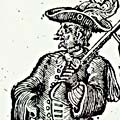 |
Every (also known as John Avery, John Every, Long Ben, Benjamin Bridgeman, Captain Bridgeman) was one of Britain's most well-known pirates of the late 17th century,
the model for Daniel Defoe's hero in Life, Adventures, and Piracies, of the Famous Captain Singleton (1720).
Every served in the Royal Navy and on merchant, buccaneer and slave ships,
before beginning a life of piracy about 1691. In 1694, joining a ship in the service of Spain,
he helped plot a mutiny and was elected captain of his new pirate ship, renamed the "Fancy."
After preying on various ships en route around Africa, he headed to the mouth of the Red Sea
where levied tolls on all ships passing in or out, especially those of
Mughal India and the East India Company.
He eventually ended up in the West Indies, where his ship
was either sold or destroyed in a storm. Afterward his crew broke up and several were captured and hanged,
Every returned to England, was cheated out of his fortune, and eventually died in poverty.
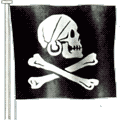
|
Alexandre Exquemelin
Active 1660's - 1690's |
Probably born in Normandy,
France, Exquemelin was a surgeon who went to the Caribbean with the French West India company
and joined the Tortuga buccaneers. Back in Europe he wrote the famous "Bucaniers of America"
published in 1678, and then returned to the Spanish Main in the 1690's. |
  |
Joseph Farrell
AKA Faro, Ferro
Circa 1694
British Pirate |
Farrell commanded the Portsmouth Adventurer until it was shipwrecked. He worked with both William Want and Henry Every in the Red Sea and Indian Ocean. |
John Fenn
British Pirate
Active 1721-1723 |
Fenn was Thomas Anstis' gunner (and was missing one hand) prior to the taking
and becoming the captain of the Morning Star. When the Morning Star was wrecked off the Grand Caymens,
he was made captain of another ship before being captured on Tobago in the spring of 1723, and hanged
on Antegoa. |
Jean Fleury
AKA Florin
French Corsair
Died 1527 |
One of the first French
corsairs to attack a Spanish treasure fleet, Fleury was a privateer in the service of the
Viscount of Dieppe. |
William Fly |
Boatswain William Fly, while on board a slave ship, led a mutiny and murdered its captain. Once in charge, he renamed the ship "Fame's Revenge".
Captain Fly was notorious for going into fits of rage, swearing, and being a brute. He was known for at times whipping his captives an excruciating 100 lashes.
At the end of his one month piratical stint along the New England coast, he was captured off the coast of Newburyport and brought to justice in Boston where he was hanged at Nix's Mate Island. He is said to have placed his own noose around his neck while cursing the executioner for not knowing his trade. |
Freeman
British Pirate
Active 1663 - 1665 |
In 1663, Captain Morris was one among many pirates (Captain Sir Henry Morgan, David Marteen, Captain Rackman and Captain Freeman)
who was involved in raids against Mexico and Nicaragua. Because it was forbidden to raid Spanish
possessions at that time, those involved pretended to be privateering under the commission of the Jamaica governor.
In Mexico, they had anchored their ships at the mouth of the Grijalva River and marched 50 miles
inland to Villahermosa, the capital of the Tabasco Province. They took the garrison by complete surprise.
Returning to the coast, they found that their ships had been taken over by Spaniards. They stole 6 small
boats and paddled south, stopping to sack a small town along the way. They then went to Trujillo,
Honduras, where they seized a ship at anchor, proceeded to the mouth of the San Juan river where
they hid their ships, then using the small boats they had captured, rowed 100 miles up-river to Granada
on Lake Nicaragua.
After the sack of Granada, the pirates went back to Port Royal, Jamaica, arriving there in
1665. This was an unparalleled voyage, consisting of several thousand miles, reaching far inland,
and the siege of three towns of high importance.
Captain Morris would further be part of Morgan's raids on Portobello in 1668 and Maracaibo in 1669. After a peace treaty had been signed between England and Spain,
In 1671, Captain Morris and Lawrence Prince led an assault on Panama assault commissioned
by the governor of Jamaica. The governor was then arrested and replaced by
Thomas Lynch, and he in turn arrested Captain Henry Morgan. Lynch gave Morris a frigate and ordered
him to seek out and arrest any captains refusing to quit their piratical activities. |
Antonio Fuët
Active 1660's - 1690's |
This French pirate from Narbonne was known as Captain Moidore.
Once, when he was attacking a ship, Fuet ran out of shot and had to load his cannon with "moidores" which
were a type of gold coin used in Portugal and Brazil. |
 |


